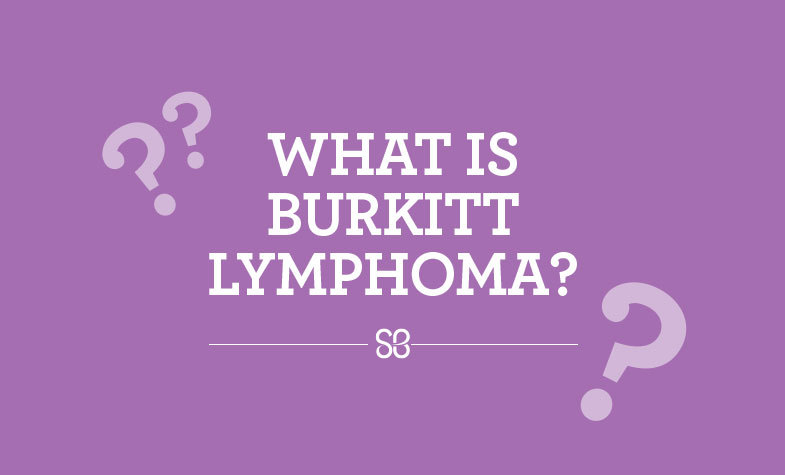
Raman Bahal, Ph.D., a St. Baldrick’s Research Grant recipient at the University of Connecticut, Storrs, Connecticut, explains Burkitt Lymphoma symptoms, treatment options, and research opportunities.
What is Burkitt Lymphoma?
Burkitt lymphoma is a highly aggressive type of non-Hodgkin’s lymphoma that affects the B-lymphocytes, a type of infection-fighting immune cell. Burkitt lymphoma impairs the immune system and is rapidly fatal if left untreated.
There are three major types:
- Endemic Burkitt Lymphoma (African), affecting African children with malaria or Epstein-Barr (EB) Viral infection
- Sporadic (Non-African) Burkitt Lymphoma, which is customarily found in the USA and Western Europe
- Immunodeficiency-associated Lymphoma, which is found in people with HIV/AIDS
Burkitt lymphoma is the fastest-growing cancer in humans and is common among young children. It is most likely to occur in children with a compromised immune system. In U.S, Sporadic Burkitt Lymphoma accounts for 30% of all childhood lymphoma cases, with peak incidence around age of 10 years old.
What are the signs and symptoms of Burkitt Lymphoma?
It starts with the formation of a tumor mass in the abdomen followed by involvement of spleen, bone marrow, liver, brain and spinal fluid. It is classified into different stages based on the organ involvement. Stage IV indicates spread to the bone marrow and the brain. Common symptoms include weight loss, fever, and night sweats along with abdominal swelling, intestinal obstruction, an enlarged thyroid, and enlarged tonsils.
How is Burkitt Lymphoma diagnosed?
Since it spreads quickly, a prompt diagnosis is essential. Tissues of enlarged lymph nodes or other suspicious sites like the bone marrow, spleen or liver are looked at under a microscope to determine the stage of lymphoma. Other techniques include Computed Tomography (CT) imaging of the abdomen, chest and pelvis; blood tests; examination of spinal fluid; and testing for HIV.
Learn more about the realities of childhood cancer.
How is Burkitt Lymphoma treated? What are the side effects of treatment?
Treatment of Burkitt lymphoma is based on the stage of cancer. Standard treatment involves chemotherapy in combination with immunotherapy or radiation therapy, which kills the rapidly dividing cancer cells. Surgery is required in some cases to remove a large tumor mass. Tumors that do not respond to standard therapy (refractory) or come back after treatment (relapse) are difficult to treat. In such cases, patients might require a stem cell transplant or enrolling in clinical trials for new treatments.
While intensive chemotherapy kills lots of cancer cells, it can lead to tumor lysis syndrome (TLS), which can affect the kidneys, heart, and the nervous system. Supportive therapy helps to combat these side effects. Other side effects involve increased risk of infection, bleeding, heart or lung disease, and poor appetite.
How is research helping kids with Burkitt Lymphoma?
Extensive research is ongoing to develop treatments for newly diagnosed as well as relapsed cases of Burkitt lymphoma. New experimental treatments include specifically targeting tumor cells using antibodies, antibody-drug conjugates, or activating the body’s immune system to fight cancer. Burkitt lymphoma is associated with deregulation of the MYC gene, which is a cancer-causing gene (oncogene). Several approaches to suppress the MYC expression for treatment of Burkitt lymphoma are being explored and have shown promising results.
Clinical trials to investigate the biology of each child’s lymphoma are also available to find the unique therapy. Ongoing genomic sequencing of Burkitt lymphoma will help determine new potential targets for therapy.
How is the St. Baldrick’s Foundation making a difference in your research?
St. Baldrick’s foundation has helped support novel precision medicine that can target critical cells and create potent therapeutic modalities to treat Burkitt lymphomas. It is hoped that future treatments can effectively treat the tumors and cancerous cells without affecting bystander normal cells.
Join us today and #DFYchildhoodCancers!
Register. Fundraise. Show up and shave.
Read more on the St. Baldrick’s blog:

 SBF
Tweets »
SBF
Tweets »